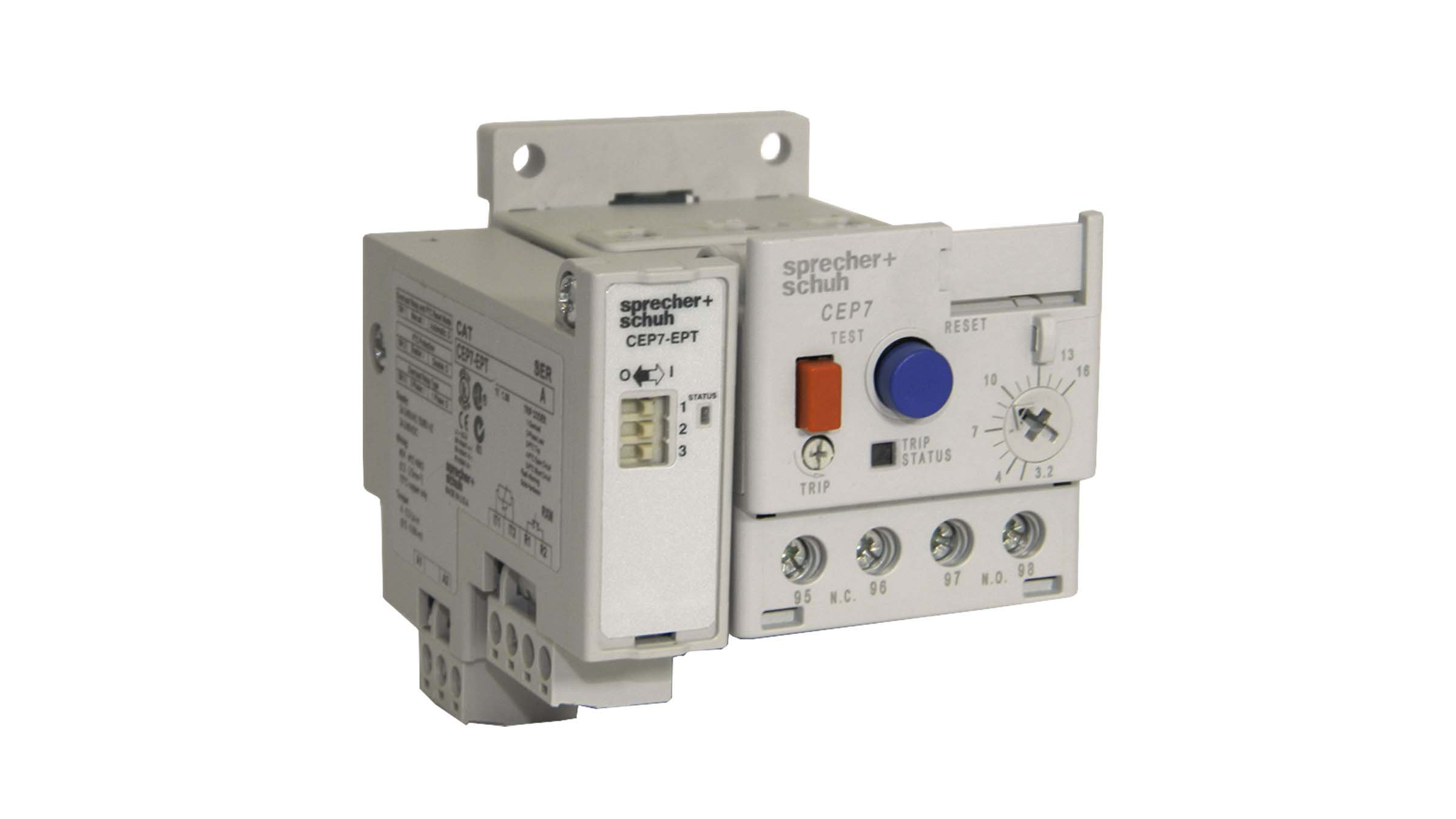PTC Thermistor Protection Using CEP7-EPT Side Mount Module
Question:
What are the differences between the CEP7-EPT and the old RT3/RT7 for thermistor protection?
Answer:
The RT3 and RT7 were stand-alone devices. The CEP7-EPT must be used in tandem with a CEP7-EE__ Overload Relay. Other than that, the same features can be found on both, but installation is the question.
| Model Features | CEP7(S)-EE + CEP7-EPT |
RT7-E1 | RT7-E2 |
|---|---|---|---|
| Thermal overload protection | • | • | • |
| Short-circuit/open-circuit protection in the sensor measuring circuit |
• | • | • |
| Trip indication (Red LED) | • |
• |
• |
| Automatic reset | • |
• |
• |
| Manual reset | • | ||
| Remote reset (external button) | • | • | |
| Storage of switching status in memory | • | ||
| Test button | • | • | |
| Power-on indication (Green LED) | • | • | • |
Often installed in the motor stator windings, Positive Temperature Coefficient (PTC) resistors –known as thermistors - increase their resistance with an increase in temperature. This increase in resistance alerts equipment of a rise in motor temperature.
The characteristic comparison between the two products (RT3/RT7 vs. CEP7-EPT) shows application similarity in the technical information and rated values. CEP7-EPT is a suitable application replacement item for the RT3/RT7 since this side module runs independently from the overload portion – and you can just have PTC protection without having any current flowing through the CEP7.
For additional information please contact your nearest authorized distributor, sales representative, or call our customer service or technical support lines.

Related Links